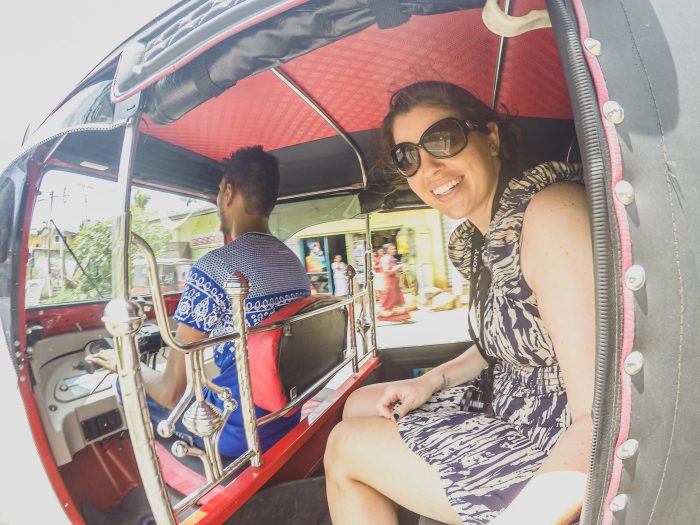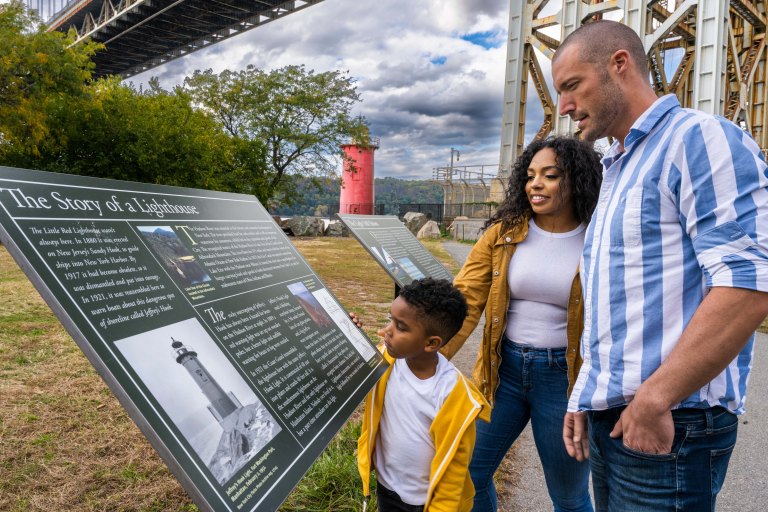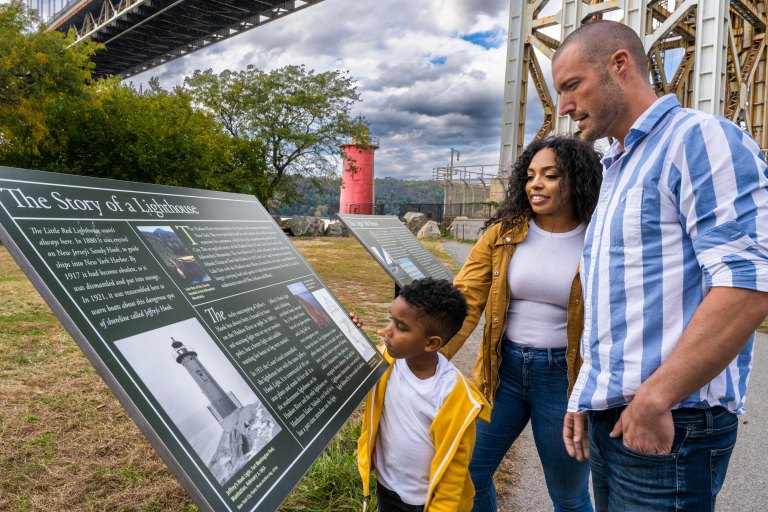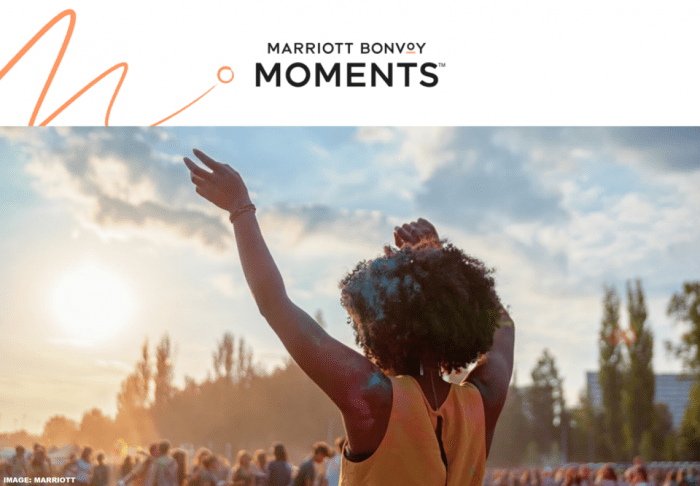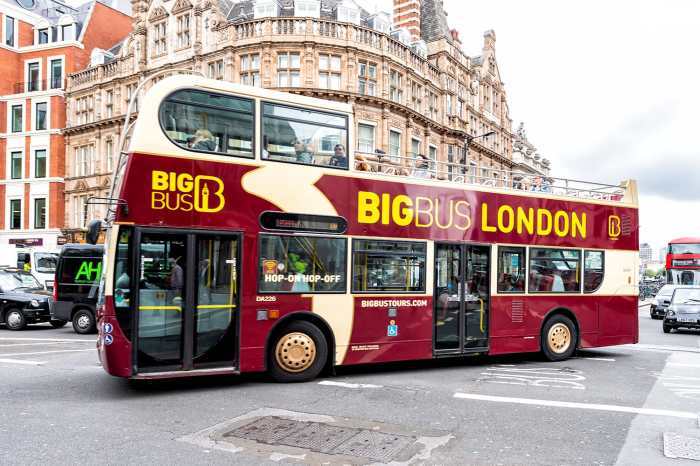What would happen if you open airplane emergency door? This question might seem frivolous, but the reality is far more complex and potentially dangerous than most people imagine. Imagine the sudden decompression, the terrifying drop in temperature, and the sheer force of the air rushing out. This article delves into the intricate details of the immediate, environmental, and long-term consequences of such an action, highlighting the importance of following safety procedures and understanding the intricate systems at play within a pressurized aircraft.
From the initial physical impact on passengers to the cascading effects on the aircraft’s systems, this exploration provides a detailed overview of the potential dangers and necessary safety protocols. We’ll analyze the factors influencing the evacuation process, including altitude, weather conditions, and passenger responses, and examine the procedures for handling the incident post-event. Prepare to be amazed by the complex interplay of physics, engineering, and human behavior in this fascinating exploration.
Immediate Effects
Opening an airplane emergency exit at cruising altitude is a catastrophic event, with immediate and devastating consequences for everyone involved. The rapid depressurization, extreme temperature changes, and the sheer force of the sudden release of air create a dangerous environment, potentially leading to severe injuries or fatalities. Understanding these immediate effects is crucial for both passengers and crew in developing emergency response strategies.
Rapid Depressurization
The atmosphere inside a pressurized aircraft is maintained at a higher pressure than the outside environment at cruising altitude. Opening an emergency exit disrupts this pressure balance, resulting in a rapid and significant drop in cabin pressure. This sudden decompression can cause the expansion of gases in the body, leading to pain, difficulty breathing, and even more severe conditions.
The rate of depressurization is critical; faster depressurization leads to more severe consequences.
Extreme Temperature Changes
Simultaneous with the pressure drop, the temperature outside the aircraft will be drastically lower than the cabin temperature. This rapid temperature change can lead to hypothermia, particularly if exposed to the elements for extended periods. The combination of cold air and the loss of body heat can rapidly impair bodily functions, potentially leading to frostbite and serious health complications.
The speed and extent of the temperature change depend on the altitude and the surrounding environmental conditions.
Aircraft Stability and Control
Opening an emergency exit disrupts the aircraft’s aerodynamic balance, potentially leading to loss of control. The sudden loss of air pressure and the forces acting on the aircraft’s structure can cause it to pitch, roll, or yaw unpredictably. The loss of aerodynamic lift and increased drag on the compromised structure will directly impact the aircraft’s ability to maintain stability.
Opening an airplane emergency door? Let’s just say it’s not a good idea. The sudden pressure change and rapid descent would be extremely dangerous. Plus, there are now stricter regulations regarding passenger behavior and emergency procedures, which are covered in detail in the latest new flight travel rules. Following these new rules, and importantly, knowing what NOT to do, is crucial for everyone’s safety.
So, stick to your seat, and let the professionals handle emergencies.
Specific models and designs will have unique response mechanisms.
Forces on Passengers and Crew
The rapid decompression causes a significant force differential on the passengers and crew. The sudden rush of outside air will push against exposed skin and internal organs. The impact will be significant depending on the position of the passenger or crew member relative to the emergency exit. This sudden force can lead to serious injuries, including broken bones, internal bleeding, and potentially more severe trauma.
Impact on Passengers by Seating Position
| Seating Position | Immediate Effects |
|---|---|
| Front | Passengers in the front of the plane experience a slightly less extreme pressure differential than those in the back. The closer proximity to the aircraft’s centre of mass and the design of the cabin’s structure contribute to this lessened impact. However, the forces from the sudden rush of air can still be significant. |
| Middle | Passengers in the middle sections of the plane are generally subjected to a moderate pressure differential. The effects are still significant, but not as extreme as for those near the exit or the tail. The forces from the sudden rush of air are noticeable, though not as extreme as the front or back. |
| Back | Passengers in the back of the plane are subjected to the most extreme pressure differential. The rapid rush of air and the loss of cabin pressure are the most significant. The force from the rush of air will be the most severe and can lead to significant injury. |
Safety Procedures
Opening an emergency door on an aircraft presents a complex set of challenges, demanding swift and precise actions from all crew members and passengers. This necessitates well-defined safety procedures, clear communication channels, and a meticulous understanding of roles and responsibilities. Failure to adhere to these procedures can lead to significant safety risks.The primary objective of safety procedures in an emergency door opening situation is to ensure the swift and orderly evacuation of passengers and crew, minimizing injuries and maximizing survivability.
This involves a coordinated effort between pilots, flight attendants, and passengers, all working in concert to navigate the critical events that follow.
Standard Safety Procedures for Handling an Emergency Door Opening
The standard safety procedures for handling an emergency door opening involve a cascade of actions, initiated by the crew and followed by the passengers. These procedures are meticulously practiced during pre-flight safety briefings, ensuring a coordinated response in case of an emergency. Each procedure is designed to enhance the chances of a safe evacuation.
- Crew members immediately assess the situation, determining the most suitable evacuation route based on the aircraft’s configuration, the prevailing weather conditions, and the proximity to potential hazards.
- Cabin crew activate the emergency evacuation procedures, informing passengers of the imminent action and guiding them to the designated exits.
- Passengers are instructed to follow the crew’s directions, remaining calm and orderly, and moving towards the exits in an organized manner.
- Crew members ensure that the emergency exits are clear of obstructions, allowing for unimpeded passenger movement.
- Crew members assist passengers, particularly those with disabilities or mobility issues, ensuring their safe evacuation.
Roles and Responsibilities of Crew Members
Crew members play crucial roles during an emergency door opening incident. Their actions directly impact the safety and well-being of passengers. Clear lines of communication and defined responsibilities are vital to a successful evacuation.
- Pilots: Pilots maintain control of the aircraft, ensuring stability and minimizing risk to the aircraft itself. They also monitor the external environment, identifying any potential obstacles that could impact the evacuation process. For instance, in mountainous terrain, they might have to navigate carefully to avoid the surrounding cliffs. In a situation with a clear field of view, the pilot may choose a lower-altitude approach for evacuation.
- Cabin Crew: Cabin crew members guide passengers, ensuring orderly movement toward the exits and providing assistance to those requiring it. They also monitor passenger compliance with safety procedures, ensuring a controlled evacuation.
Communication Protocols Between the Cockpit and Cabin Crew
Effective communication is paramount during an emergency door opening. A well-defined protocol ensures that critical information is transmitted rapidly and accurately.
Opening an airplane emergency door mid-flight is definitely not a good idea. You’d experience a rapid drop in cabin pressure, leading to a very uncomfortable and potentially dangerous situation. If you’re looking for a thrilling adventure, consider copying my trip to Andermatt, Switzerland, a stunning alpine region perfect for hiking and exploring! copy my trip andermatt switzerland.
It’s way safer than jumping out of a plane. Seriously, don’t try that at home – or in the air.
- Clear communication protocols, established and practiced beforehand, facilitate seamless information sharing between the cockpit and cabin crew. This ensures that both groups are on the same page concerning the unfolding situation.
- Standard phrases and codes are used to facilitate swift and accurate transmission of critical information, such as the severity of the emergency, the location of the emergency door opening, and the prevailing conditions.
Critical Steps to Ensure Passenger Safety During the Evacuation Process, What would happen if you open airplane emergency door
Passengers play a vital role in the evacuation process. Their preparedness and compliance with safety instructions directly impact their safety.
- Passengers are trained to follow instructions from crew members, remaining calm and moving toward the exits in an orderly manner. This is essential to prevent panic and ensure the safety of everyone.
- Passengers are advised to keep their belongings to a minimum, ensuring they don’t impede their movement or the movement of others.
- Passengers should be aware of the emergency exits and procedures, allowing them to react swiftly in an emergency.
Order of Evacuation for Different Aircraft Configurations
The order of evacuation varies depending on the aircraft configuration. A clear understanding of these configurations is crucial for ensuring passenger safety.
Opening an airplane emergency door at high altitude is a seriously bad idea – you’re likely to experience a rapid drop in cabin pressure and a whole lot of turbulence. Thankfully, you can plan a trip to a fantastic new hotel in Havana, Cuba, and explore the vibrant culture and delicious food, by checking out new hotel in havana cuba and how to fly there.
But seriously, don’t try opening that emergency exit unless absolutely necessary – the consequences are far more serious than a missed flight!
| Aircraft Configuration | Evacuation Order |
|---|---|
| Narrow-body aircraft | Evacuation from the affected side, prioritizing exits closest to the emergency door. |
| Wide-body aircraft | Evacuation from both sides of the aircraft, prioritizing exits closest to the emergency door. |
| Regional jets | Evacuation from the affected side, prioritizing exits closest to the emergency door. Evacuation procedures may vary based on specific aircraft design. |
Environmental Factors: What Would Happen If You Open Airplane Emergency Door
Opening an airplane emergency door at high altitude presents a unique set of challenges influenced by the surrounding environment. Atmospheric conditions, wind currents, and even the weather can significantly impact the evacuation process and the safety of passengers and crew. Understanding these factors is crucial for developing effective emergency procedures.
Influence of Altitude and Atmospheric Conditions
The thinner air at higher altitudes drastically reduces the effectiveness of any immediate response. The reduced air pressure can make breathing more difficult for those outside the aircraft, and the lack of oxygen can exacerbate any pre-existing health conditions. Furthermore, the lower air density affects the effectiveness of any deployed safety equipment. For example, a parachute’s performance will be diminished at high altitudes, potentially impacting the evacuation process.
The lower air pressure can also contribute to the rapid expansion of gases within the cabin, potentially causing further hazards. Consider the scenario of a sudden decompression, which could rapidly increase the pressure difference between the aircraft cabin and the external environment.
Impact of Wind Speed and Direction
Wind speed and direction play a critical role in the evacuation process. Strong winds can make it more difficult for passengers to maintain their balance and control their movement during an emergency exit. High winds can also impede the evacuation process by pushing passengers away from the aircraft, creating a potential hazard. Wind direction is equally important, as it can determine which direction passengers will be blown, potentially leading to injuries or increased danger from obstacles on the ground.
Wind conditions are often a significant factor in the planning of emergency procedures.
Effects of Different Weather Conditions
Weather conditions greatly affect the success of an emergency evacuation. Clear skies often present a more straightforward scenario, with relatively stable wind conditions. However, during storms, strong winds and turbulent air make the evacuation more challenging. The presence of rain or snow can make the ground slippery, increasing the risk of slips and falls. A storm could make the evacuation more dangerous, potentially causing injury from falling debris or lightning strikes.
The need for proper safety measures is highlighted by these differing weather conditions.
Potential Dangers of Ice Accumulation
Ice accumulation on the aircraft exterior can compromise the structural integrity of the aircraft, making it more prone to failure. Ice buildup can also interfere with the operation of the emergency exit mechanisms. In addition, ice can severely reduce visibility for passengers and crew, hindering their ability to navigate during an evacuation. This is especially concerning during flight operations at higher altitudes, where the aircraft’s performance is heavily affected.
Consider an example of an aircraft encountering severe icing conditions during takeoff or landing. This scenario could lead to flight control problems and potential safety risks.
Effect of Various Atmospheric Conditions on Emergency Door Opening
| Atmospheric Condition | Impact on Emergency Door Opening | Additional Considerations |
|---|---|---|
| Clear Sky, Light Wind | Relatively smooth evacuation; minimal wind interference. | Passenger movement is straightforward. |
| Clear Sky, Strong Wind | Passengers may experience difficulty maintaining balance; wind can displace passengers. | Careful coordination during evacuation is crucial. |
| Stormy Conditions | Strong winds and turbulence make evacuation difficult; reduced visibility. | Emergency equipment might be compromised. |
| Icing Conditions | Ice buildup compromises door operation; reduced visibility. | Increased risk of structural failure. |
| High Altitude | Reduced air pressure and density affect equipment performance. | Potential for rapid decompression. |
Passenger Responses
The unexpected opening of an airplane emergency exit can trigger a wide range of emotional and behavioral responses in passengers. Understanding these reactions is crucial for effective crisis management, ensuring passenger safety, and minimizing the potential for panic. Predicting and mitigating these reactions is a significant aspect of pre-flight training and emergency response protocols.Passengers’ responses are complex and influenced by a combination of factors, including pre-existing anxieties, the perceived severity of the situation, and the actions of others around them.
This range of responses can vary greatly, impacting the overall safety and efficiency of the evacuation process. The psychological impact of such a situation is profound, and appropriate measures to control passenger panic are essential to ensure a safe and orderly descent.
Typical Human Reactions
Passengers, confronted with an emergency door opening, may experience a spectrum of physiological and psychological reactions. These responses are often immediate and involuntary. Fear, anxiety, and confusion are common initial reactions, leading to a range of behaviors from utter panic to subdued apprehension. Some may become disoriented, while others may exhibit aggressive or impulsive behavior. Understanding these instinctive reactions is critical in anticipating potential issues during an emergency evacuation.
Psychological Impact
The psychological impact of an emergency situation like an open emergency door is significant. Passengers may experience feelings of vulnerability, fear, and loss of control. These emotions can exacerbate existing anxieties or create new ones. The perceived threat to life can lead to a cascade of physiological responses, including elevated heart rate, sweating, and difficulty breathing. This physiological response can further amplify the psychological impact, potentially creating a vicious cycle of panic.
Strategies to Manage Panic
Effective crisis management during an emergency door opening relies on proactive strategies to manage and control passenger panic. Clear and concise communication from cabin crew is paramount. Calm, authoritative direction, coupled with visible confidence, can significantly influence passenger reactions. Visual cues, such as brightly lit exits and clear signage, also play a critical role in guiding passengers during the evacuation process.
Furthermore, pre-flight training on emergency procedures can significantly reduce passenger anxiety and improve their ability to react appropriately in a crisis.
Simulated Emergency Door Opening Event
During a simulated emergency door opening event, passengers exhibited a range of responses. Some passengers immediately reacted with panic, exhibiting disorientation and aggressive behavior. Others displayed a more subdued reaction, initially showing confusion and apprehension, but then quickly complied with instructions. Crew members were able to effectively manage the situation by maintaining calm demeanor and providing clear instructions.
The effectiveness of the crew’s communication and leadership significantly influenced the overall passenger response.
Passenger Reactions and Causes
| Passenger Reaction | Possible Causes |
|---|---|
| Panic, shouting, running incoherently | Fear, disorientation, perceived threat to life, lack of clear instructions. |
| Subdued apprehension, compliance | Understanding of the situation, calmness of crew, clear instructions, confidence in the situation’s management. |
| Confusion, indecisiveness | Lack of prior training, unfamiliar environment, ambiguity of the situation, lack of clear guidance. |
| Aggressive behavior | Fear, frustration, perceived lack of control, stress response. |
| Passive, unresponsive | Shock, fear, inability to process the situation, potential underlying medical condition. |
Aircraft Systems Impact
Opening an airplane emergency door mid-flight has catastrophic consequences for the aircraft’s systems. The sudden decompression, loss of structural integrity, and the forceful ejection of air cause a cascade of failures that can quickly render the aircraft uncontrollable. Understanding these impacts is crucial for emergency preparedness and assessing the risks involved.The immediate effect of opening an emergency door is a significant disruption of the aircraft’s internal environment.
This disturbance ripples through various systems, often leading to immediate and cascading failures. The severity of these failures depends on the specific aircraft design, its operational status at the time, and the location of the opened door.
Flight Control Systems
The flight control systems, including ailerons, elevators, and rudder, are critically affected by the sudden decompression. The loss of air pressure within the control surfaces can disrupt their ability to respond to pilot commands. This can manifest as a loss of control, making it extremely difficult, if not impossible, for the pilot to maintain stable flight. Moreover, the sudden pressure change can cause the control surfaces to malfunction, leading to erratic and unpredictable movement.
Hydraulic and Electrical Systems
The aircraft’s hydraulic and electrical systems are also highly vulnerable to the effects of decompression. Hydraulic systems, essential for operating flight controls and other mechanical components, can lose pressure rapidly, leading to failures in critical functions. Similarly, electrical systems, responsible for powering numerous components, can experience surges or complete failures due to the pressure changes and the introduction of moisture.
This can result in the loss of critical systems like navigation, communication, and even the flight control systems themselves.
Fuel Systems
The fuel systems are another critical area susceptible to damage. The sudden decompression can cause fuel leaks, leading to fires and further complications. Additionally, the loss of pressure can cause the fuel to slosh around the tanks, potentially disrupting the flow to the engines and creating imbalances in the fuel distribution. This can lead to engine failure or a loss of thrust, further exacerbating the crisis.
Aircraft System Failure Scenarios
| Aircraft System | Immediate Failure Scenarios |
|---|---|
| Flight Control Systems | Loss of control, erratic movements, aileron/elevator/rudder malfunction |
| Hydraulic Systems | Loss of pressure, failure of actuators, inability to control flight surfaces |
| Electrical Systems | Power surges, complete system failure, loss of critical functions (navigation, communication) |
| Fuel Systems | Fuel leaks, fuel sloshing, disrupted fuel flow, potential for fires |
| Pressurization System | Complete system failure, inability to maintain cabin pressure, catastrophic decompression |
System Variation Based on Design and Age
Aircraft designs vary significantly in terms of their structural integrity, system redundancy, and pressure relief mechanisms. Older aircraft may have less sophisticated pressure systems, making them more vulnerable to decompression effects. Newer aircraft, equipped with advanced systems and redundancy, might experience less severe immediate failures, but still face significant challenges in maintaining safe flight. Furthermore, the location of the emergency door opening and the speed of the decompression can dramatically alter the impact on various systems.
For instance, an opening on the upper fuselage might have a different impact than one on the lower fuselage.
Long-Term Effects (on the aircraft)
Opening an airplane emergency door at altitude has profound and lasting consequences on the aircraft’s structure. The sudden decompression, loss of pressure, and the resulting impact on various components lead to a cascade of potential structural failures. The severity of these effects depends critically on the duration the door remains open and the altitude at which the incident occurs.
This section delves into the long-term damage patterns and the complex assessment process that follows such an event.
Damage to Fuselage and Critical Components
The fuselage, the aircraft’s main body, is the first to suffer. Significant stress is placed on the structural integrity of the aircraft. The rapid decompression causes the cabin to rapidly equalize pressure with the outside air, resulting in severe stress on the fuselage skin, leading to permanent deformation. The integrity of the door frame itself will be affected, with potential cracks and deformation.
Furthermore, the impact of outside debris, even seemingly minor objects, could create significant damage. Additionally, components such as windows, doors, and other exterior panels are susceptible to damage. Internal components like wiring, fuel lines, and other critical systems are also exposed to extreme pressure changes and can sustain significant damage.
Possible Structural Failures
The compromised structural integrity of the fuselage and other critical components can lead to various structural failures. These failures can range from minor cracks and dents to catastrophic structural collapse, depending on the severity of the initial impact and the duration of the door being open. For instance, the weakened structure could become vulnerable to fatigue cracks, further exacerbated by the flight’s stress cycles.
These fatigue cracks, if left unchecked, could eventually lead to complete failure. A compromised door frame, for example, could create an opening for additional damage or lead to the loss of structural integrity of the fuselage.
Severity of Damage Assessment
The severity of the damage is directly proportional to the duration the door is open and the altitude. Higher altitudes mean a more rapid and drastic pressure change. A longer duration of exposure means more time for the structural components to be exposed to these forces. The following table illustrates a general assessment of damage severity.
| Duration (minutes) | Altitude (ft) | Damage Severity |
|---|---|---|
| 1 | 30,000 | Moderate |
| 1 | 40,000 | Severe |
| 5 | 30,000 | Severe |
| 5 | 40,000 | Catastrophic |
Damage Assessment and Repair Decisions
Assessing the structural damage requires a comprehensive and methodical approach. Aircraft engineers will use specialized tools and techniques to analyze the affected areas. Non-destructive testing methods are crucial to identify the extent of damage without causing further harm. Detailed inspections will involve visual checks, radiographic imaging, and potentially, advanced materials testing to determine the precise nature and extent of the damage.
The resulting assessment will inform repair decisions. Repair options will vary depending on the severity of the damage. Minor damage might be repairable with patching and reinforcement. However, significant damage could necessitate substantial replacement of damaged components, and in extreme cases, the aircraft may be deemed unrepairable. Decisions are based on cost-effectiveness, safety standards, and the aircraft’s overall structural integrity.
Evacuation Strategies

Surviving a mid-air emergency necessitates swift and organized evacuation. Proper planning and execution of evacuation strategies are critical to minimizing casualties and maximizing passenger safety. Understanding the specifics of each aircraft model and its unique evacuation characteristics is paramount. The goal is not just to get people off the plane, but to do so efficiently and safely.
Optimal Pressurized Aircraft Evacuation Strategies
Effective evacuation from a pressurized aircraft demands careful planning and adherence to established procedures. The design of the aircraft, its size, and the specific layout of exits influence the most efficient evacuation routes. Factors such as passenger behavior and crew coordination also play a significant role.
Evacuation Routes Based on Aircraft Models
Aircraft evacuation routes are meticulously planned and differ significantly based on the specific aircraft model. The layout of exits, emergency slides, and the interior configuration all dictate the most appropriate routes.
- Airbus A320 Family: Evacuation typically starts with the front and rear exits, followed by the middle exits, ensuring a systematic and efficient process. The crew guides passengers towards the designated exits and emergency slides. Proper spacing and controlled movement are vital.
- Boeing 737 Family: The Boeing 737 family often features a different configuration, necessitating tailored evacuation procedures. Emergency exits are positioned differently, and the crew must direct passengers accordingly. A combination of front, middle, and rear exits is used, with a focus on a controlled and organized descent. The layout of the galleys and lavatories also impacts the evacuation flow.
- Airbus A380: The Airbus A380, due to its massive size, necessitates a multi-phased evacuation strategy. Multiple exits and emergency slides are deployed, and the crew meticulously directs passengers. The sheer number of passengers necessitates a systematic and comprehensive approach, with clear communication and designated routes for different sections of the aircraft.
Comparison of Evacuation Procedures for Different Configurations
The layout and configuration of an aircraft significantly impact evacuation procedures. Different cabin layouts, seating arrangements, and the location of exits influence the optimal evacuation strategy.
- Single-aisle vs. wide-body: Single-aisle aircraft often have a more compact cabin, requiring a quicker and more direct evacuation compared to wide-body aircraft. The latter typically has more exits and a more complex cabin layout, demanding a more intricate and multi-stage evacuation plan.
- Passenger Density: The number of passengers onboard plays a crucial role in evacuation procedures. Higher passenger density necessitates a more organized and controlled approach to avoid congestion and potential injuries. The crew’s ability to maintain order and direct passengers is critical.
- Crew Coordination: Effective crew coordination is vital for a successful evacuation. Clear communication, designated roles, and well-rehearsed procedures are essential to ensure a smooth and efficient process. The crew’s ability to manage the situation, direct passengers, and maintain order directly affects the success of the evacuation.
Factors Influencing Evacuation Effectiveness
Numerous factors contribute to the success or failure of an aircraft evacuation. The following factors are crucial:
- Passenger Behavior: Passenger compliance with crew instructions and maintaining order during the evacuation is critical. Passengers must follow the crew’s guidance to designated exits and avoid panic or overcrowding.
- Crew Training and Communication: Adequate training and effective communication are essential for the crew to guide passengers through the evacuation process. The crew’s ability to provide clear instructions and maintain order during the evacuation significantly impacts the process’s success.
- Environmental Conditions: External conditions, such as visibility, temperature, and wind speed, can influence the evacuation process. Adverse weather conditions can create additional challenges, impacting the effectiveness of evacuation procedures.
Summary of Effective Emergency Evacuations
The following table summarizes key aspects of effective emergency evacuations.
| Factor | Description |
|---|---|
| Aircraft Model | Specific layout of exits and emergency slides |
| Passenger Behavior | Compliance with crew instructions and maintaining order |
| Crew Coordination | Clear communication and designated roles |
| Environmental Factors | Visibility, temperature, and wind speed |
Post-Incident Procedures

The aftermath of an airplane emergency door opening presents a complex series of actions that must be executed swiftly and methodically. These procedures are critical for ensuring passenger safety, securing the aircraft, and initiating a thorough investigation. Effective post-incident procedures minimize potential harm and contribute to the eventual restoration of normalcy.The immediate response to an emergency door opening necessitates a structured approach.
Ground crews, in coordination with the aircraft crew, are tasked with containing the incident, safeguarding the area, and assisting with passenger and crew evacuation. Thorough investigations are then undertaken to determine the cause of the emergency, ensuring lessons learned are applied to prevent similar incidents in the future.
Immediate Actions to Secure the Aircraft and Area
Ensuring the safety of the aircraft and the surrounding environment is paramount. This involves implementing immediate control measures to prevent further escalation of the situation and potential harm. Immediate actions often include isolating the affected area, preventing further access to the aircraft, and deploying emergency response teams.
- Aircraft Isolation: The aircraft is immediately isolated to prevent unauthorized access, and to contain potential hazards or further damage. This includes securing the surrounding area to prevent uncontrolled movement of people and objects.
- Emergency Response Activation: Emergency services, such as fire and rescue personnel, are immediately alerted and dispatched to the scene to support the ongoing operations.
- Personnel Safety: The safety of all personnel, including passengers and crew, is prioritized. Procedures are initiated to ensure the immediate needs of those affected are met.
Investigation Process to Determine the Cause of the Incident
A thorough investigation is critical to understanding the root cause of the incident and preventing future occurrences. The investigation often involves a multi-faceted approach, combining technical analysis, eyewitness accounts, and environmental factors.
- Data Collection: Detailed documentation of the incident, including visual evidence, witness statements, and any available data from the aircraft’s systems, is meticulously collected.
- Expert Analysis: Aircraft engineers and accident investigators are consulted to assess the aircraft’s condition, the components involved, and potential contributing factors.
- External Review: External agencies, such as regulatory bodies, are often involved to ensure impartiality and compliance with safety standards.
Ensuring Passenger and Crew Safety
The safety and well-being of passengers and crew are of utmost importance during and after an incident. Post-incident procedures must ensure that appropriate support is provided.
- Medical Assistance: Medical personnel are deployed to assess and provide necessary treatment to those who have sustained injuries or require immediate medical attention.
- Psychological Support: Psychological support services are made available to assist passengers and crew who may be experiencing emotional distress following the incident.
- Information Dissemination: Clear and accurate information is disseminated to passengers and relevant parties about the situation and next steps. This includes informing them of the procedures for contacting their families.
Roles and Responsibilities in Post-Incident Procedures
A well-defined structure of roles and responsibilities among different parties is essential for a coordinated response.
| Role | Responsibilities |
|---|---|
| Aircraft Crew | Immediate response to the incident, passenger and crew safety, and initial assessment of the situation. |
| Ground Personnel | Security, evacuation, emergency response, and coordination with the aircraft crew. |
| Emergency Services | Providing medical assistance, handling emergencies, and maintaining order at the scene. |
| Investigators | Documenting the incident, collecting evidence, and determining the cause. |
Epilogue
In conclusion, opening an airplane emergency door at cruising altitude unleashes a cascade of immediate and long-term effects, highlighting the critical importance of adhering to safety protocols. Understanding the rapid changes in pressure, the forces acting on passengers, and the potential impact on the aircraft’s systems is paramount. This detailed look at the incident reveals the intricate balance of factors involved and emphasizes the crucial role of preparedness in such a critical situation.
So, next time you’re on a flight, take a moment to appreciate the sophisticated engineering and safety measures that ensure your well-being.











